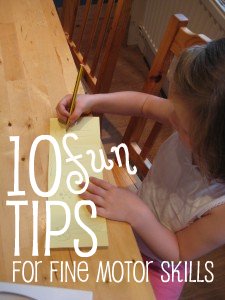Remember the kids art idea we tried last week, exploring texture? Here’s what happened when we added painting on top – lovely sensory, textured experiments!
by Cathy James
Remember the kids art idea we tried last week, exploring texture? Here’s what happened when we added painting on top – lovely sensory, textured experiments!

by Cathy James
Today’s invitation in the Stay at Home, Screen Free Activities Programme is all about play dough.
Never made it before? Run out of ideas for something new?
Here are my top ten play dough ideas – and an easy recipe for homemade playdough.
by Cathy James
Here’s a simple, sensory play idea from my daughter: play dough fireworks!
 Play dough fireworks [Read more…]
Play dough fireworks [Read more…]by Cathy James
What all the best-dressed kids are accessorising with this season: make your own bag!
by Cathy James
We took our favourite play dough recipe and transformed it into some fun messy play, making jam tarts for the Queen of Hearts in our Valentine bakery.

by Cathy James

This week we’ve got ***10 tips for developing fine motor skills: ideas to help children strengthen their grip and improve the flexibilty of their fingers. These are important things for young children to be working on so they can enjoy being more independent, fastening their own buttons and zips. Fine motor skills are needed for writing and drawing too and there are lots of fun ways you can encourage your pre-schooler.
Tip #1 Encouraging your child’s fine motor skills gets them ready for lots of things from tying shoe laces to holding a pencil.
Tip #2 If your child’s not interested in pencils try using chalkboards and sticks in sand instead. Use water and a paint brush too.
Tip #3 Fastening buttons and zips are great fine motor practice so try to allow extra time to let your child fasten up their own coat.
Tip #4 Baking helps children’s fine motor skills: as they knead dough and rub butter into flour they strengthen their fingers.
Tip #5 From around the age of three you can try using scissors: try making these paper lanterns which are great cutting practise.
Tip #6 Choose good scissors & try thin card not paper at first. Try these cutting skills ideas from TeachPreschool.
Tip #7 Lacing is great practice too. It’s easy to make your own lacing games: try this lacing apple from No Time For Flash Cards.
Tip #8 Peeling stickers is perfect for little fingers. Buy some with your favourite characters on and get sticking.
Tip #9 How about clothespegs for building finger strength? Hang up the washing or make a number line .
Tip #10 Thread a pasta necklace, fill pots using tongs, have a go with tweezers: all great ways to develop little fingers.
Does your child find buttons and zips easy to fasten? How do you help them practise?

